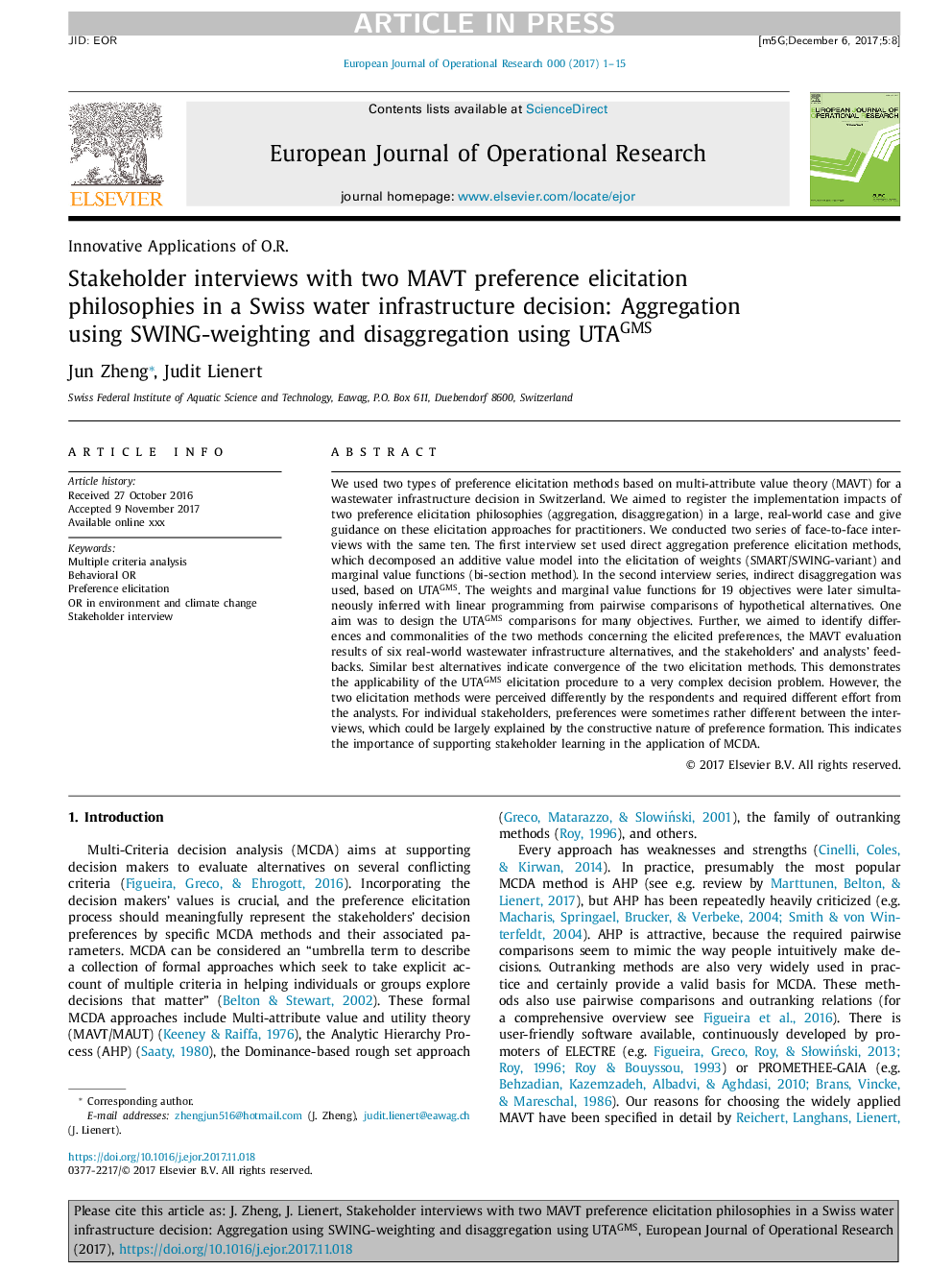| Article ID | Journal | Published Year | Pages | File Type |
|---|---|---|---|---|
| 6895069 | European Journal of Operational Research | 2018 | 15 Pages |
Abstract
We used two types of preference elicitation methods based on multi-attribute value theory (MAVT) for a wastewater infrastructure decision in Switzerland. We aimed to register the implementation impacts of two preference elicitation philosophies (aggregation, disaggregation) in a large, real-world case and give guidance on these elicitation approaches for practitioners. We conducted two series of face-to-face interviews with the same ten. The first interview set used direct aggregation preference elicitation methods, which decomposed an additive value model into the elicitation of weights (SMART/SWING-variant) and marginal value functions (bi-section method). In the second interview series, indirect disaggregation was used, based on UTAGMS. The weights and marginal value functions for 19 objectives were later simultaneously inferred with linear programming from pairwise comparisons of hypothetical alternatives. One aim was to design the UTAGMS comparisons for many objectives. Further, we aimed to identify differences and commonalities of the two methods concerning the elicited preferences, the MAVT evaluation results of six real-world wastewater infrastructure alternatives, and the stakeholders' and analysts' feedbacks. Similar best alternatives indicate convergence of the two elicitation methods. This demonstrates the applicability of the UTAGMS elicitation procedure to a very complex decision problem. However, the two elicitation methods were perceived differently by the respondents and required different effort from the analysts. For individual stakeholders, preferences were sometimes rather different between the interviews, which could be largely explained by the constructive nature of preference formation. This indicates the importance of supporting stakeholder learning in the application of MCDA.
Keywords
Related Topics
Physical Sciences and Engineering
Computer Science
Computer Science (General)
Authors
Jun Zheng, Judit Lienert,
